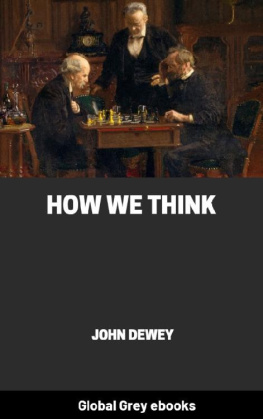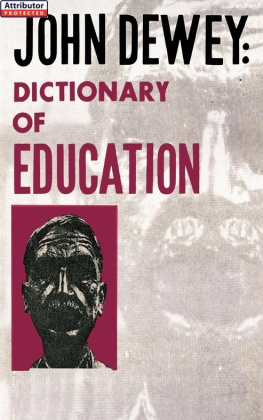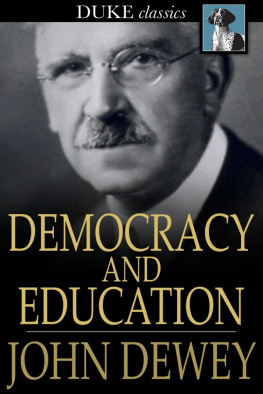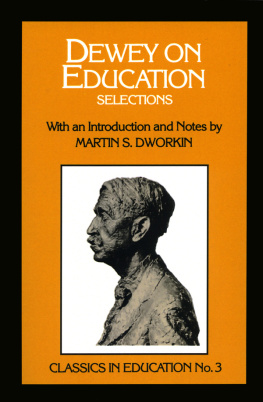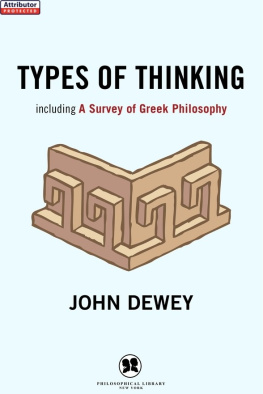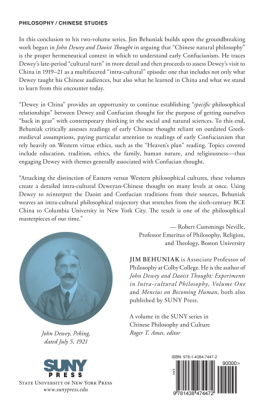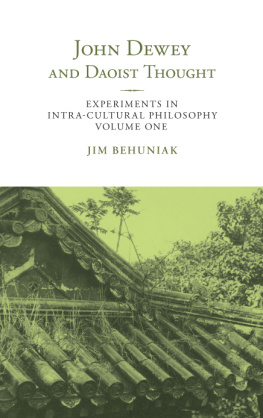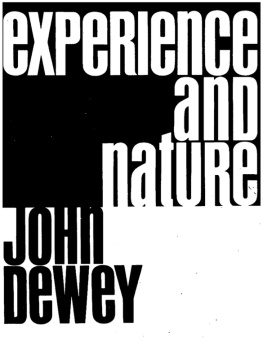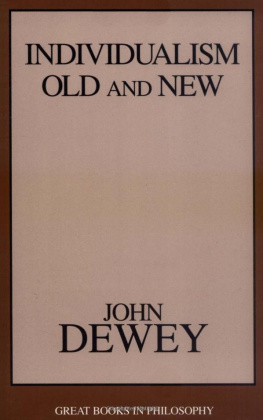HOW WE THINK
BY
JOHN DEWEY
1910
How We Think By John Dewey.
This edition was created and published by Global Grey
GlobalGrey 2019
Get more free ebooks at

globalgreyebooks.com
Contents
Preface
Our schools are troubled with a multiplication of studies, each in turn having its own multiplication of materials and principles. Our teachers find their tasks made heavier in that they have come to deal with pupils individually and not merely in mass. Unless these steps in advance are to end in distraction, some clew of unity, some principle that makes for simplification, must be found. This book represents the conviction that the needed steadying and centralizing factor is found in adopting as the end of endeavor that attitude of mind, that habit of thought, which we call scientific. This scientific attitude of mind might, conceivably, be quite irrelevant to teaching children and youth. But this book also represents the conviction that such is not the case; that the native and unspoiled attitude of childhood, marked by ardent curiosity, fertile imagination, and love of experimental inquiry, is near, very near, to the attitude of the scientific mind. If these pages assist any to appreciate this kinship and to consider seriously how its recognition in educational practice would make for individual happiness and the reduction of social waste, the book will amply have served its purpose.
It is hardly necessary to enumerate the authors to whom I am indebted. My fundamental indebtedness is to my wife, by whom the ideas of this book were inspired, and through whose work in connection with the Laboratory School, existing in Chicago between 1896 and 1903, the ideas attained such concreteness as comes from embodiment and testing in practice. It is a pleasure, also, to acknowledge indebtedness to the intelligence and sympathy of those who cooperated as teachers and supervisors in the conduct of that school, and especially to Mrs. Ella Flagg Young, then a colleague in the University, and now Superintendent of the Schools of Chicago.
New York City, December, 1909.
PART ONE: THE PROBLEM OF
TRAINING THOUGHT
Chapter One. What Is Thought?
1. Varied Senses of the Term
Four senses of thought, from the wider to the limited
No words are oftener on our lips than thinking and thought. So profuse and varied, indeed, is our use of these words that it is not easy to define just what we mean by them. The aim of this chapter is to find a single consistent meaning. Assistance may be had by considering some typical ways in which the terms are employed. In the first place thought is used broadly, not to say loosely. Everything that comes to mind, that "goes through our heads," is called a thought. To think of a thing is just to be conscious of it in any way whatsoever. Second, the term is restricted by excluding whatever is directly presented; we think (or think of) only such things as we do not directly see, hear, smell, or taste. Then, third, the meaning is further limited to beliefs that rest upon some kind of evidence or testimony. Of this third type, two kindsor, rather, two degreesmust be discriminated. In some cases, a belief is accepted with slight or almost no attempt to state the grounds that support it. In other cases, the ground or basis for a belief is deliberately sought and its adequacy to support the belief examined. This process is called reflective thought; it alone is truly educative in value, and it forms, accordingly, the principal subject of this volume. We shall now briefly describe each of the four senses.
Chance and idle thinking
I. In its loosest sense, thinking signifies everything that, as we say, is "in our heads" or that "goes through our minds." He who offers "a penny for your thoughts" does not expect to drive any great bargain. In calling the objects of his demand thoughts, he does not intend to ascribe to them dignity, consecutiveness, or truth. Any idle fancy, trivial recollection, or flitting impression will satisfy his demand. Daydreaming, building of castles in the air, that loose flux of casual and disconnected material that floats through our minds in relaxed moments are, in this random sense, thinking. More of our waking life than we should care to admit, even to ourselves, is likely to be whiled away in this inconsequential trifling with idle fancy and unsubstantial hope.
Reflective thought is consecutive, not merely a sequence
In this sense, silly folk and dullards think. The story is told of a man in slight repute for intelligence, who, desiring to be chosen selectman in his New England town, addressed a knot of neighbors in this wise: "I hear you don't believe I know enough to hold office. I wish you to understand that I am thinking about something or other most of the time." Now reflective thought is like this random coursing of things through the mind in that it consists of a succession of things thought of; but it is unlike, in that the mere chance occurrence of any chance "something or other" in an irregular sequence does not suffice. Reflection involves not simply a sequence of ideas, but a consequencea consecutive ordering in such a way that each determines the next as its proper outcome, while each in turn leans back on its predecessors. The successive portions of the reflective thought grow out of one another and support one another; they do not come and go in a medley. Each phase is a step from something to somethingtechnically speaking, it is a term of thought. Each term leaves a deposit which is utilized in the next term. The stream or flow becomes a train, chain, or thread.
The restriction of thinking to what goes beyond direct observation.
Reflective thought aims, however, at belief
II. Even when thinking is used in a broad sense, it is usually restricted to matters not directly perceived: to what we do not see, smell, hear, or touch. We ask the man telling a story if he saw a certain incident happen, and his reply may be, "No, I only thought of it." A note of invention, as distinct from faithful record of observation, is present. Most important in this class are successions of imaginative incidents and episodes which, having a certain coherence, hanging together on a continuous thread, lie between kaleidoscopic flights of fancy and considerations deliberately employed to establish a conclusion. The imaginative stories poured forth by children possess all degrees of internal congruity; some are disjointed, some are articulated. When connected, they simulate reflective thought; indeed, they usually occur in minds of logical capacity. These imaginative enterprises often precede thinking of the close-knit type and prepare the way for it. But they do not aim at knowledge, at belief about facts or in truths; and thereby they are marked off from reflective thought even when they most resemble it. Those who express such thoughts do not expect credence, but rather credit for a well-constructed plot or a well-arranged climax. They produce good stories, notunless by chanceknowledge. Such thoughts are an efflorescence of feeling; the enhancement of a mood or sentiment is their aim; congruity of emotion, their binding tie.
Thought induces belief in two ways
III. In its next sense, thought denotes belief resting upon some basis, that is, real or supposed knowledge going beyond what is directly present. It is marked by acceptance or rejection of something as reasonably probable or improbable. This phase of thought, however, includes two such distinct types of belief that, even though their difference is strictly one of degree, not of kind, it becomes practically important to consider them separately. Some beliefs are accepted when their grounds have not themselves been considered, others are accepted because their grounds have been examined.
Next page
